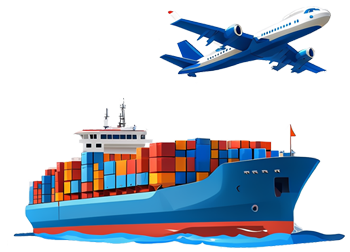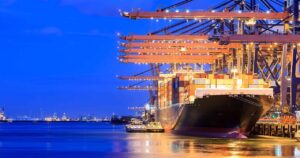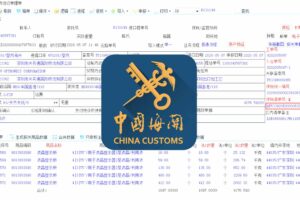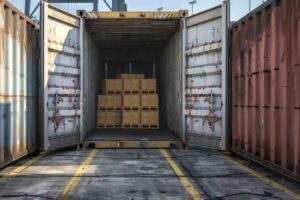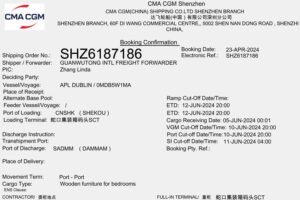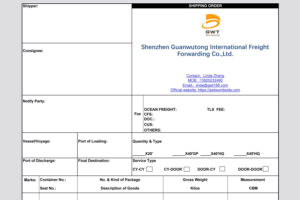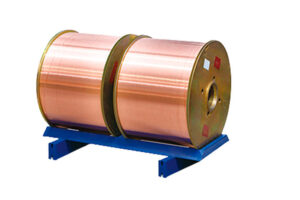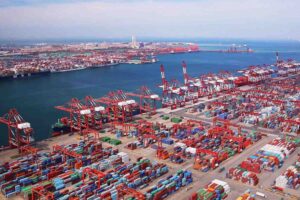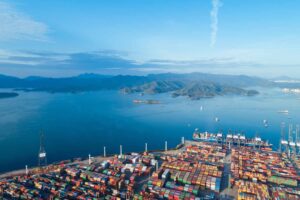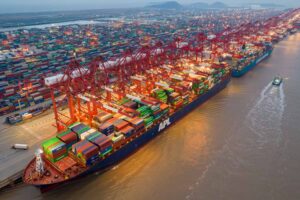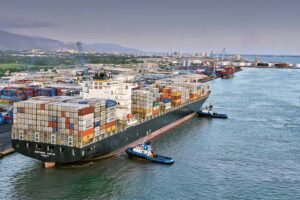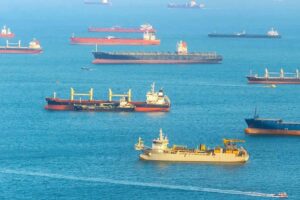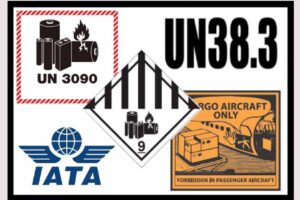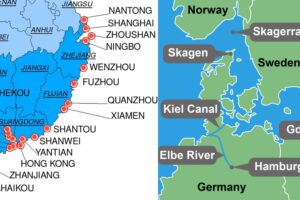Was ist ein übergewichtiger Container? Manchmal wird er auch als Schwerlastcontainer bezeichnet, was nicht FCL-Container bedeutet.
Es ist wichtig zu wissen, was ein übergewichtiger Container ist, wenn Sie schwere Güter wie Metalle und Mineralien, Maschinen, Baumaterialien, Chemikalien, Fahrzeuge, Holz und Baumstämme verschiffen. In der Logistik- und Schifffahrtsbranche ist es von entscheidender Bedeutung, das Konzept des "übergewichtigen Containers" zu verstehen. Für jeden Container gibt es eine maximale Gewichtsgrenze, deren Überschreitung zu Problemen wie Verformung, Einsturz des Bodens oder Verbiegen der Dachbalken führen kann. Viele Exportgüter, wie Holz und Sicherheitsglas, haben ein geringes Volumen, aber ein hohes Gewicht, so dass verstärkte Container erforderlich sind. In diesem Zusammenhang bezieht sich der Begriff "übergewichtiger Container" auf diese verstärkten Optionen, wie z. B. verstärkte 20-Fuß-Container.
Auf der Seite Sammlung Know-how über Frachtcontainerkönnen Sie alle Inhalte zum Thema Container auf unserer Website einsehen.
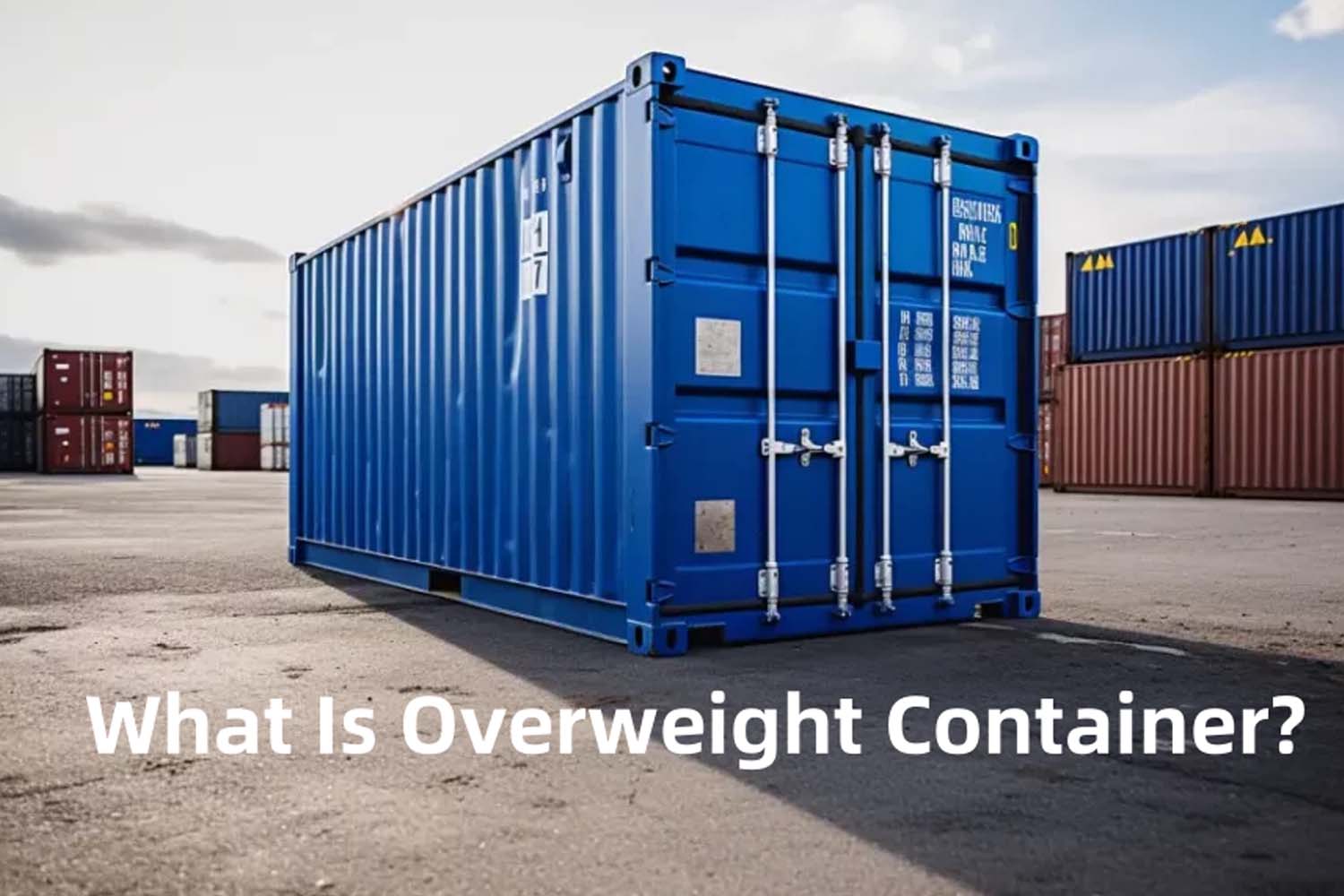
Reedereien haben ihre eigenen Standards
Um sich mit übergewichtigen Containern vertraut zu machen, muss man die Gewichtsnormen der Reedereien kennen. So wird beispielsweise ein 20-GP-Container mit einer Ladung von mehr als 21 Tonnen als übergewichtig eingestuft. Es gibt jedoch Höchstgrenzen, z. B. 26 Tonnen für einen 20-GP-Container.
Warum setzen Reedereien Übergewichtsnormen fest?
Kapazität und Rentabilität: Jedes Schiff hat Gewichts- und Platzbeschränkungen. Um den Gewinn zu maximieren, bevorzugen die Reedereien leichtere Fracht. Daher ist die Anzahl der "übergewichtigen Containerplätze" auf einem Schiff begrenzt. Die Richtlinien können je nach Route variieren. In Regionen mit entwickelten Schwerindustrien wie Nordost- und Nordchina zum Beispiel, werden Häfen wie Dalian und Tianjin mehr übergewichtige Container umschlagen. Dies kann zu Situationen führen, in denen die Gewichtsgrenzen erreicht werden, aber noch Platz vorhanden ist. Um dies auszugleichen, können die Unternehmen die Schwellenwerte für übergewichtige Container herabsetzen und bei Überschreitung bestimmter Gewichte zusätzliche Gebühren erheben.
Verwendung von Schiffen durch Dritte: Wenn ein Schifffahrtsunternehmen das Schiff eines anderen Unternehmens nutzt, sind die Gewichtsbeschränkungen strenger. Beim Kauf von Slots zwischen Unternehmen wird in der Regel ein Standard von 1 TEU = 14 oder 16 Tonnen zugrunde gelegt. Wird dieses Gewicht überschritten, kann die Fracht nicht verladen werden.
Saisonale und Routenanpassungen: Je nach Saison oder Beliebtheit der Route können die Reedereien ihre Richtlinien für übergewichtige Container entsprechend anpassen.
Die besondere Bedeutung des "schweren Containers" in den kantonesischen Regionen
In kantonesischsprachigen Gebieten wie Hongkong, Guangdong und Guangxi bezieht sich ein "Schwerlastcontainer" auf einen Container, der mit Fracht gefüllt ist. Gängige Begriffe sind "提空还重" (leer holen, voll zurückbringen) und "提吉还重" (glücklich holen, voll zurückbringen).
提空还重: Dies bedeutet, dass ein leerer Container abgeholt, mit Ladung beladen und dann mit dem vollen Container zu einem bestimmten Lagerplatz zurückgebracht wird. In diesem Zusammenhang bezieht sich ein "schwerer Container" auf einen mit Fracht gefüllten Container, unabhängig von seinem tatsächlichen Gewicht.
提吉还重: Das bedeutet, einen "glücklichen" (leeren) Container aufzunehmen, ihn mit Fracht zu beladen und den vollen Container dann zu einem bestimmten Lagerplatz zurückzubringen. Der Begriff "Glückscontainer" (吉箱) wird anstelle von "Leercontainer" verwendet, weil "leer" im Kantonesischen wie "unglücklich" klingt und die Menschen ungünstige Begriffe lieber vermeiden.
Diese Begriffe spiegeln die besonderen kulturellen und sprachlichen Gepflogenheiten der Logistik in den kantonesischsprachigen Regionen wider.

